9 Wally's Walk
Macquarie University NSW 2109
Pushing the boundaries of technology
Learn about some of the projects our team are working on right now.
AAO is engaging with major observatories around the world to deliver innovative new instruments based on the new technologies that we are developing. These include for ESO’s Very Large Telescope (VLT) and GMTO's Giant Magellan Telescope (GMT).
ESO and GMT projects
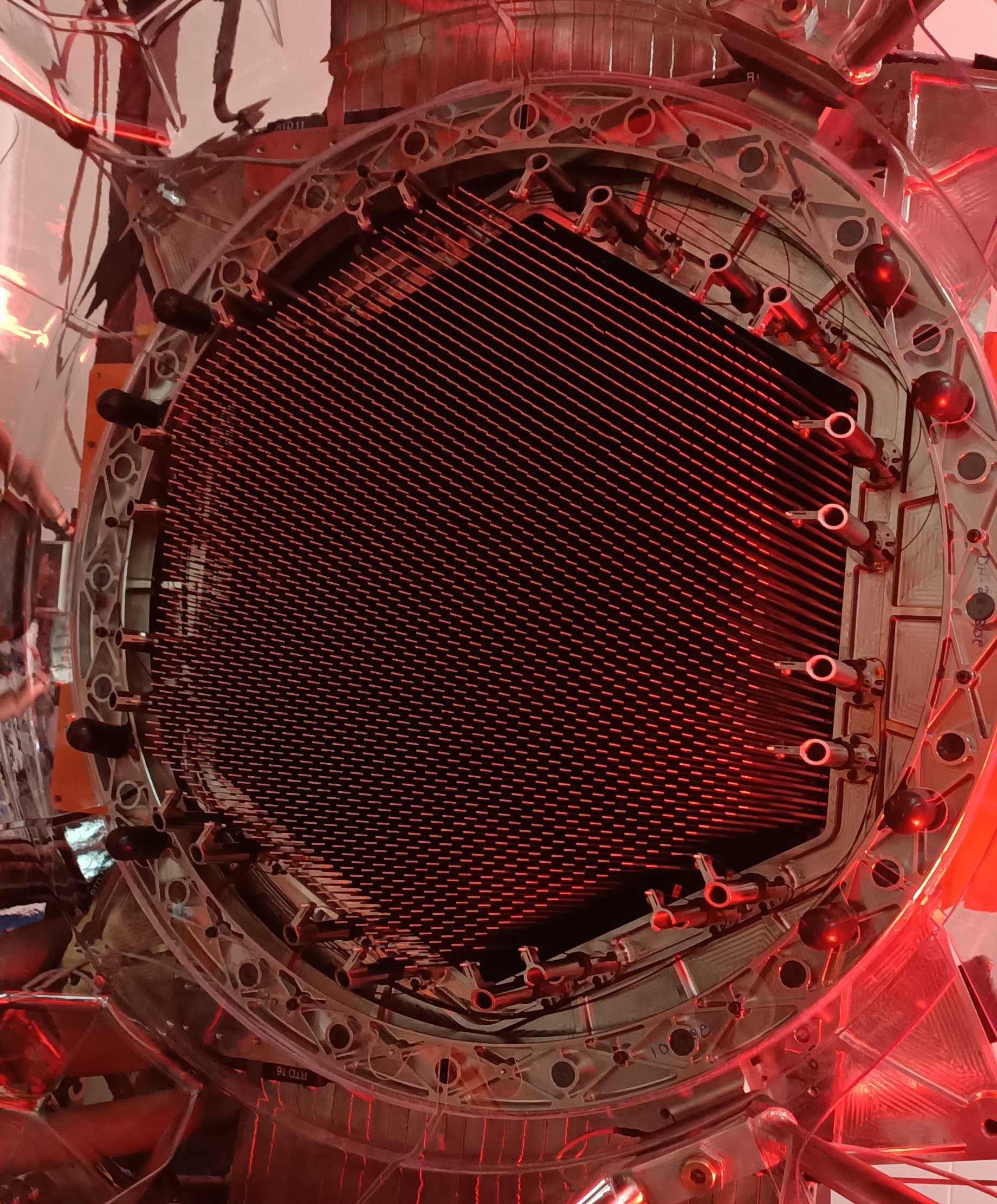 AESOP is the fibre positioner unit for the 4MOST instrument for the 4-metre European Southern Observatories VISTA telescope in Chile.
AESOP is the fibre positioner unit for the 4MOST instrument for the 4-metre European Southern Observatories VISTA telescope in Chile.
The 4MOST project, led by the Astrophysical Institute Potsdam (Germany), involves a number of European partners.
The AAO component, AESOP, deploys 2400 optical fibres to required positions on the curved focal surface of the telescope. Each fibre can be deployed anywhere within a fixed patrol area. Field reconfigurations are achieved in an iterative closed-loop process with positional feedback from a metrology system. Optical fibres are connectorised at their exit from the positioner system, where they feed a fibre bundle terminated in a series of optical spectrographs.
The design for AESOP is an evolution of the AAO’s tilting spine technology, first designed and implemented in the FMOS-Echidna instrument for the Subaru telescope.
Credit: AAO/Rebecca Brown
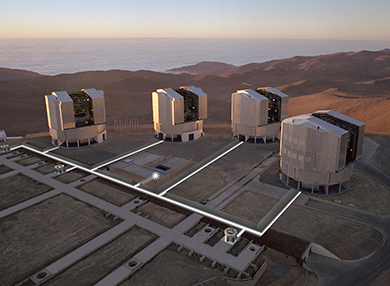 In this project, we are collaborating with the European Southern Observatory (ESO) on the development and maintenance of pipeline data reduction software for a number of their instruments at La Silla and Paranal observatories, and in the first instance those on the Very Large Telescope (VLT).
In this project, we are collaborating with the European Southern Observatory (ESO) on the development and maintenance of pipeline data reduction software for a number of their instruments at La Silla and Paranal observatories, and in the first instance those on the Very Large Telescope (VLT).
Data reduction aims to remove the telescope’s and instrument’s signature from the collected data, thus leaving only features which pertain to the astronomical objects to be studied. The data are also calibrated so that meaningful scientific measurements can be made and compared with data taken at different times and on other instruments.
The AAO has a long history of developing data reduction software for astronomical instruments, particularly in the context of 2dfdr, the flagship data reduction and analysis software which has been used for data from the AAT and UK-Schmidt telescopes for many years.
We now combine this expertise with the ANU RSAA’s software development experience in dealing with data and adaptive optics instruments, to form an Australian collaboration working on the first ESO software project of this kind.
Credit: ESO
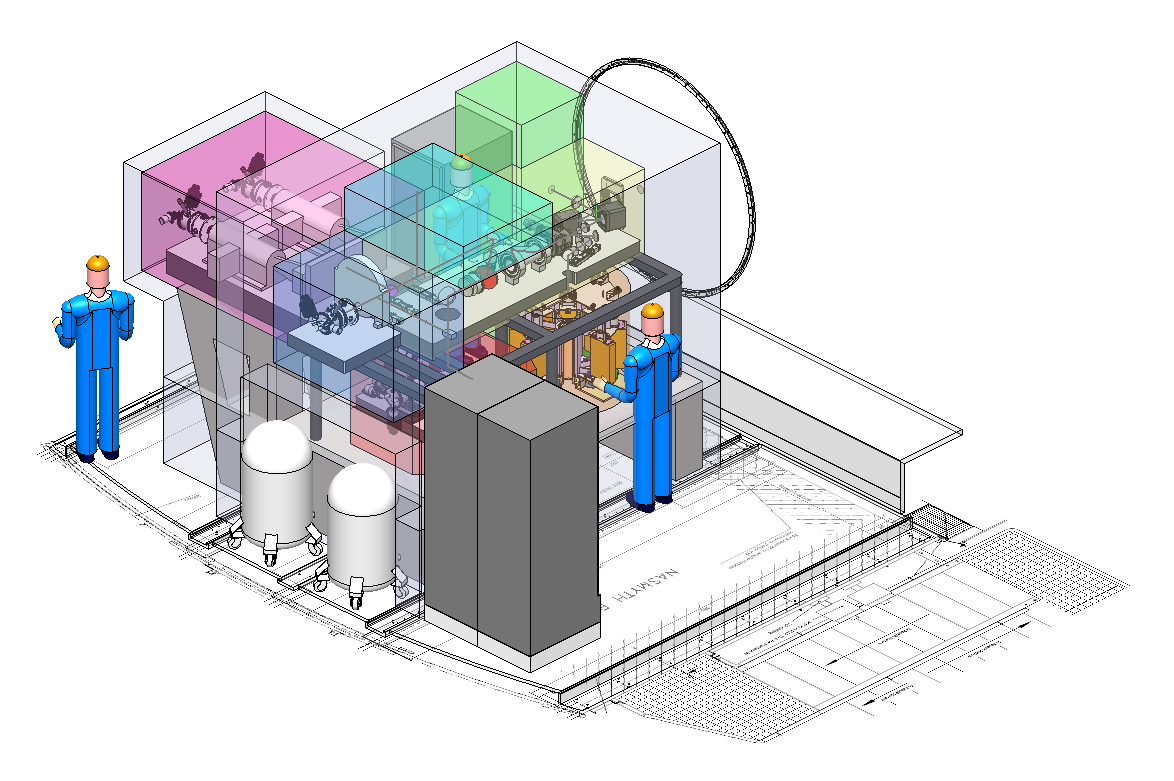 MAVIS is a multi-conjugate adaptive optics visible imager and spectrograph for the ESO VLT. MAVIS will be the first visible MCAO system in the world, using 6-8 laser guide stars to deliver diffraction-limited images (15 milli-arcsec) from the V band to the I band over a 30” field-of-view and allow integral field spectroscopy over a 3” field-of-view.
MAVIS is a multi-conjugate adaptive optics visible imager and spectrograph for the ESO VLT. MAVIS will be the first visible MCAO system in the world, using 6-8 laser guide stars to deliver diffraction-limited images (15 milli-arcsec) from the V band to the I band over a 30” field-of-view and allow integral field spectroscopy over a 3” field-of-view.
This project is a collaboration between AAO-MQ, AAO-Stromlo, INAF-Padova (Italy), INAF-Arcetri (Italy), LAM (France) and ESO (Europe). AAO-MQ are responsible for the imager and spectrograph packages.
Credit: MAVIS Consortium
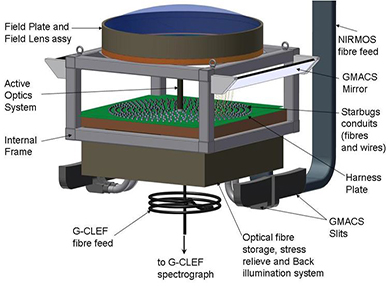 MANIFEST is a facility multi-object fibre system for the Giant Magellan Telescope.
MANIFEST is a facility multi-object fibre system for the Giant Magellan Telescope.
MANIFEST will consist of hundreds of Starbug robots that patrol the GMT field of view and feed currently planned optical spectrographs (high resolution GCLEF and medium resolution GMACS) and future spectrographs (possibly including infrared spectrographs). MANIFEST will have multiple fibre configurations, ranging from single fibres to multiple integral-field units to single integral-field-units.
The MANIFEST instrument aims to enhance the functionality of the GMT spectrographs by offering capabilities such as:
- increasing the field of view
- increased multiplex capability
- multiple deployable IFUs
- increased spectral resolution and/or wavelength coverage via image-slicing
- the opportunity for simultaneous observation with multiple instruments
- the possibility of a gravity-invariant spectrograph mounting
- the potential for OH suppression via fibre systems in the near-infrared
- the versatility of adding new instruments in the future.
BlueMUSE is a proposed blue-optimised, medium spectral resolution, integral-field-spectrograph for the Very Large Telescope (VLT). It is based around the MUSE instrument successfully deployed to the VLT in 2014. The Blue MUSE concept is led by the University of Lyon. It involves a consortium of institutes in Europe and Australia.
The AAO's contribution (a partner of Astralis Instrumentation Consortium) will have a focus on the instrument opto-mechanical structure, which will house the field splitter, relay optics, and spectrograph banks.
Other international and domestic significant projects
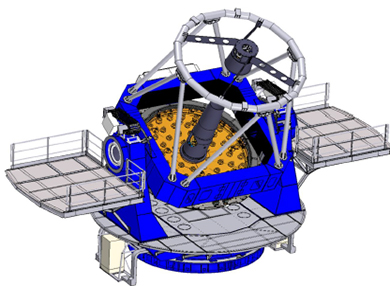 The DIRAC project tasks the AAO with designing and manufacturing an infra-red diffraction-limited camera for the Eastern Anatolia Observatory in Turkey.
The DIRAC project tasks the AAO with designing and manufacturing an infra-red diffraction-limited camera for the Eastern Anatolia Observatory in Turkey.
It will be mounted on the Nasmyth platform of the 4 metre DAG telescope.
The DIRAC imager can support a broad range of scientific interests needing high-definition near-infrared imaging: from low-mass star and exoplanet search and characterisation to studies of star-formation in the Milky Way and nearby galaxies as well as analyses of intermediate and high redshift galaxies.
In this project AAO-MQ are responsible for the design and delivery of the instrument and the overall project management. AAO-Stromlo and AAO-Usyd are partners contributing to the detector workpackage and the systems workpackage respectively.
GNAO_AOB project is a Phase A study for an adaptive optics bench for the Gemini North telescope in Hawaii. The Phase A study is being led by AAO-MQ (Astralis-AAO) representing the Astralis Instrumentation Consortium with Astralis partner ANU (Astralis-AITC), and with international partners ONERA – the French Aeropace Lab, Laboratoire d’Astrophysique de Marseille – France, and the French company ALPAO.
The adaptive optics bench is a significant component for the Gemini North Adaptive Optics project that will provide the Gemini North telescope with a state-of-the-art adaptive optics facility enabling the capability to obtain very high resolution near-infrared images over almost the entire sky. This facility will make possible a wide range of scientific studies. It will allow targeting of distant galaxies to study their formation and evolution, back to a time in the early universe when galaxies were first forming. It will also allow astronomers to gain insight into the physics of star formation within the Milky Way galaxy.
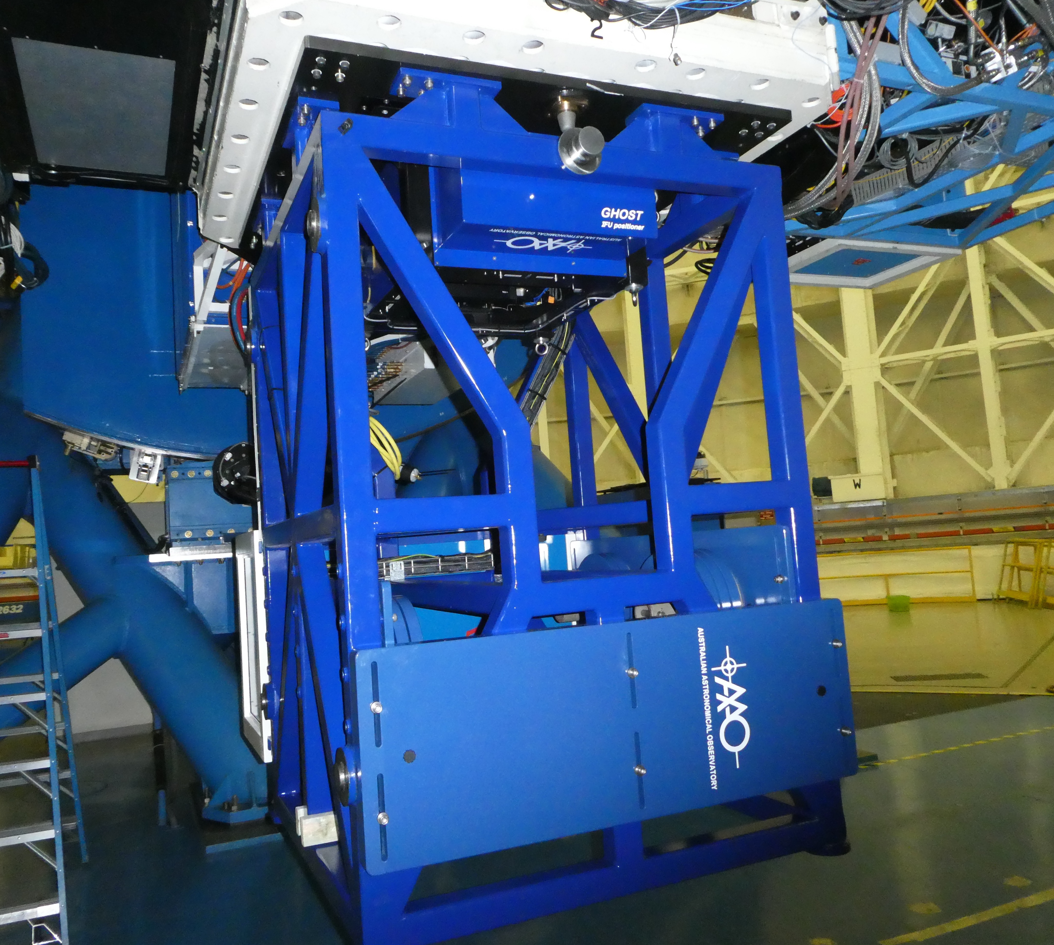
GHOST uses a high resolution asymmetric white-pupil Echelle spectrograph fed by two moveable optical-fibre image-slicing integral-field-units located at the Gemini Cassegrain focus. The instrument provides a simultaneous wavelength coverage from 363nm to at least 900nm at a resolution of R=50k-75k.
Credit: AAO/Tony Farrell